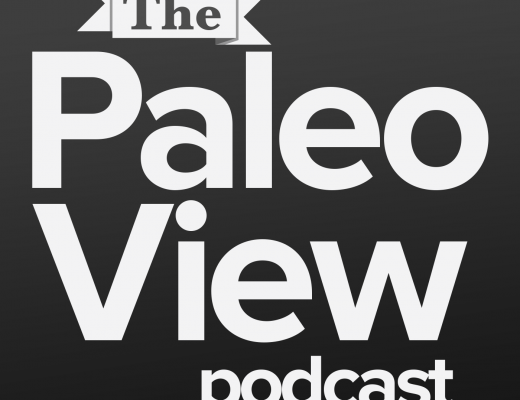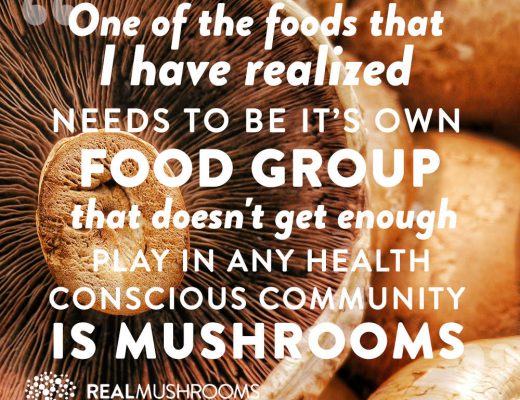
On this week’s episode, Stacy and Sarah cover all things seafood safety. What should you look for when ordering or shopping for this nutrient powerhouse? How do contaminants impact our health goals? All of this and more in episode 366!
If you enjoy the show, please review it on iTunes!
The Paleo View (TPV), Episode 366: Seafood Safety Concerns
-
-
(0:40) Welcome
- Welcome back to The Paleo View listeners!
- This week Stacy and Sarah are talking about seafood
- All the seafood and all the things people are concerned about when it comes to seafood
- And whether or not these concerns are legitimate
- Stacy and Sarah did discuss this topic on a previous episode (here), but it was time to revisit the discussion
- Eating seafood is a common talking point on this show since it is so nutrient-dense, anti-inflammatory and healing
- Before the hosts dive into the topic, they want to take a moment to thank this week’s sponsor, Butcher Box
- They have a special seafood promo that is being offered to The Paleo View listeners and this discount is not being offered anywhere else
- Butcher Box is starting to move into the realm of seafood
- Sarah thinks that they have the best salmon she has ever had
- You can always add salmon to your standard meat subscription
- However, they now seasonally sell scallops
- The Paleo View listeners can visit this link before 9/5 to redeem free bacon and free scallops
- No code is needed
- After 9/5, The Paleo View listeners will receive $15 off and a free pack of bacon
-
(7:10) Q & A
- Sarah is going to break down Alana’s question and take it step by step to look at every pollutant/processing chemical that might be introduced to fish
- There are dyes added to some low-quality fish to make it look redder
- There are times when farmed-fish are fed feed that contain dyes to change the color
- If dyes are added after the fish are processed, that is going to be added to the label
- Things that are not going to be on the label:
- Mercury
- It irreversibly binds to selenium based proteins and enzymes in our bodies so that those proteins can’t do their job
- It impacts 3 different systems the most:
- thyroid hormone productions
- liver detoxification
- protecting the brain against oxidative damage
- It impacts 3 different systems the most:
- Seafood is one of our best food sources of selenium and the mercury that the fish are exposed to actually binds with selenium based proteins in their bodies
- Once it binds with the fish’s selenium it can’t bind with our selenium
- When we are consuming that fish, almost all of the time, we are consuming more selenium than we are getting exposed to mercury
- Even fairy contaminated fish and top predators will have more selenium than mercury
- So that selenium that we are ingesting in fish is actually still helping to protect us from mercury exposure
- The surveys that have been done now show that with the exception of a few top predators in fairly polluted waters there is typically much more selenium than mercury in all ocean fish
- And probably with 97% of lake fish, you are getting more selenium than mercury
- If you are eating these top predator fish, don’t eat them that often
- Examples: mako shark, pilot whale
- Your body can still detoxify some of this mercury
- You can handle a little bit of exposure if you are eating a healthy diet and have a healthy lifestyle
- A little bit here and there is not a big deal
- Swordfish is probably fine if it comes from non-polluted waters
- And again is something you shouldn’t eat every day
- It irreversibly binds to selenium based proteins and enzymes in our bodies so that those proteins can’t do their job
- Mercury
- Fish and shellfish are some of our best sources of zinc
- On average 73% of Americans never meet the RDA of zinc
- Zinc is supposed to be the second most abundant mineral in the human body
- It is phenomenally important for a whole host of functions within the human body
- Zinc is supposed to be the second most abundant mineral in the human body
- On average 73% of Americans never meet the RDA of zinc
- We are getting really interesting nutrients from fish that are hard to get from other sources
- Fish protein is the best protein for the gut microbiome
- There have been studies that actually show that consuming fish protein can make up for high sugar diets
- The omega-3’s are really important for every system in our body
- Our neurological system, immune system, gut bacteria
- The omega-3’s from seafood are the long-chain that our body can use directly without having to convert them
- The kind from flax or chia have to be converted before our bodies can use them
- Fish protein is the best protein for the gut microbiome
- Fish has all of these amazing things so as we go through the less than ideal things, the cons are outweighed by the pros
- Alana asked about other heavy metals as well (lead and cadmium)
- There have been some environmental impact studies that have looked at heavy metal in farmed fish
- The study found that the levels in the fish are still extremely low and below the World Health Organization’s guidelines
- In places where there are more environmental protections you are going to end up with basically levels of heavy metals that are far below any level that we would want to worry about
- The other heavy metals are a moot point
- Fish has been demonized as a source, while it’s actually much much richer in nutrients that will help us detoxify
- It is also much lower than other foods, and yet it gets all the blame
- Stacy finds it interesting how pervasive mainstream media can be when it comes to creating cultural assumptions
- Sarah shared information on MTHFR gene variance and MTHFR enzyme function
- There have been some environmental impact studies that have looked at heavy metal in farmed fish
- Sarah is going to break down Alana’s question and take it step by step to look at every pollutant/processing chemical that might be introduced to fish
-
(28:41) More on Contaminants in Fish
- Cesium isotopes from Fukushima
- There have been levels detected in fish caught off the California coast
- Fukushima was the second-worst nuclear disaster ever after Chernobyl, and there is a lot of fear around the aftermath from this event
- This is an ongoing challenge
- There is a small amount of cesium-134 and cesium-137 in the ocean thanks to Fukushima
- What is important to understand is that there are radioactive isotopes in nature all over the place
- We are exposed to them on a daily basis
- If you live somewhere with high radon levels you are exposed to more
- Our body is fairly resilient to these low levels of exposure
- The amount of cesium isotopes in the most contaminated fish’s flesh is even 2,000 times lower than the threshold for health effects
- So as it pertains to eating fish from the Pacific ocean; no we should not be concerned
- For more on this, check out this blog post from Sarah
- The equation is:
- If you consumed 12 ounces (which is a very large portion) of contaminated bluefin tuna every day for an entire year, the cumulative dose of radiation that you would consume from all of that tuna would equate to 12% of the radiation dose from a one-way cross country flight from LA to New York
- Stacy appreciates that analogy – it is so helpful
- Sarah and Stacy had a sidebar discussion about personality types
- Gretchen Rubin’s 4 tendencies personality categories
- Enneagram
- Sarah shared a story about her experience playing with her kids at the playground recently
- Concerns around BPA in canned fish packaging
- Sarah wrote a blog post about BPA and its’ impact as an endocrine disruptor
- This has been confirmed
- Sarah shared more on the links between BPA exposure and various medical conditions
- Our dominant BPA exposure is through our plastic use, not through BPA lined cans
- It is added as a coating inside a can to stop acidic liquids from corroding the aluminum
- You can reduce your exposure by:
- Not heating your food in the can
- Not letting your canned goods sit in a hot car for a long amount of time
- Be careful when you are removing food from the can so that you are not scraping the edge coating into your food
- The BPA alternatives for canned good linings have been minimally tested for safety
- Many of them have also been shown to be endocrine disruptors
- There are a lot of unanswered questions around these alternatives
- The benefits of fish still outweigh the potential harm of BPA exposure
- If you are making efforts to reduce BPA exposure from other places (plastic food storage, plastic water bottles, plastic wrap)
- Where you can, mix it up with some fresh and frozen
- But overall Sarah thinks that again the benefits of eating canned fish outweigh the risks
- Sarah wrote a blog post about BPA and its’ impact as an endocrine disruptor
- Stacy shared her experience with canned goods and why she doesn’t worry about the canned goods they consume
- How they balance the quality of foods they consume
- Don’t let perfection be the enemy of good
- If you are unable to afford or find canned goods that are BPA free, don’t lose sleep over it
- Antibiotic use in farmed fish
- While wild-caught is the best, avoiding fish because wild-caught is not monetarily accessible is probably doing more harm than consuming farmed fish
- Ask the worker at your fish counter where the fish comes from and they are grown
- In most Western countries, there are regulations on how much antibiotics can be used and how long they have to be discontinued before fish can be harvested
- Antibiotic residues are linked with all kinds of problems, so if there isn’t a washout period then yes the antibiotic residues can cause health problems
- Where we see this is in developing nations where the practices are not as tightly regulated and they don’t have a vet administering the antibiotics
- Or using the right dosage and/or are failing to follow directions
- Don’t eat farmed fish when traveling to developing countries
- Stacy shared on her food evaluation approach
- Looking for sustainable practices
- If you don’t have access to sustainability sourced seafood, remember to check out Butcher Box
- They are offering an amazing deal to new subscribers
- Find out more here: https://www.butcherbox.com/thepaleoview/
- Cesium isotopes from Fukushima
-
(57:37) Closing Thoughts
- Thank you for joining Stacy and Sarah on this seafood-rich episode!
- Stacy and Sarah will be back again next week
- Don’t forget to leave a review
- A listener touched base to share this feedback:
- “Hi Stacy, I just wanted to tell you that I am listening to the beginning of the last Paleo View podcast where you are giving an update on the little girl who has alopecia. Thank you so much for giving that update! I remember that show. I remember balling my eyes out. I have alopecia too and it got pretty bad towards the end of a really stressful job I had about a year and a half ago. AIP has definitely helped, so has less stress. I too am moving away from super strict AIP because after five months I can tolerate pretty much everything now. Not gluten – I will be gluten-free for life. That is crazy to me. Two weeks into AIP, I broke down and had rice and had a horrible reaction. Eczema being the easiest way to tell I was having a reaction. I never imagined healing to the point of reintroducing so many foods, but it has happened. Thanks for sharing the update! Alopecia can be hard to talk about and there is not that much info out there. So thank you for getting the word out!”
- Stacy reminds listeners that no matter where you are at in your healing journey, know that the time will come when you can reintroduce foods
- It takes some people more time than others to heal
- Sarah loves reading comments like this
- And seeing the different ways that Stacy and Sarah are able to communicate with people and provide resources
- She loves to see the different ways the information resonates
- Thank you, listeners, for being here!
- Thank you again to Butcher Box for supporting this episode!
-





